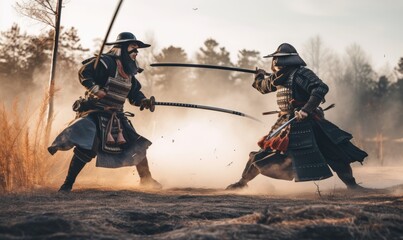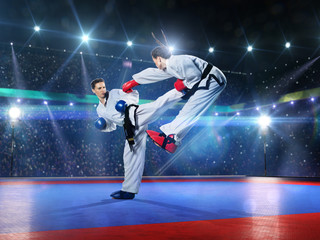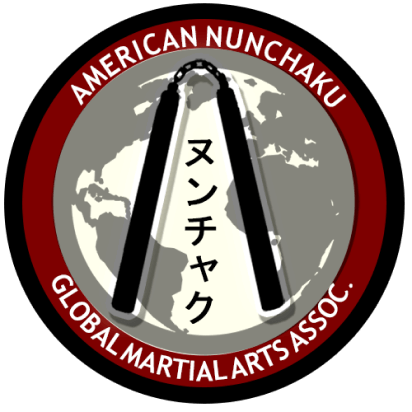Have you ever seen “jutsu” and “do” in the names of martial arts and wondered what they mean? Read on to find out!
Defining “Jutsu” and “Do”
The terms “jutsu” and “do” in martial arts carry distinct meanings and philosophies.
Jutsu (術) refers to a specific technique or skill in martial arts. It focuses on the practical application of combat techniques, emphasizing effectiveness in real-world self-defense or combat situations. Jutsu training often involves the study of specific techniques, strategies, and tactics.
Do (道), on the other hand, translates to “the way” or “the path.” It represents a broader philosophical and spiritual aspect of martial arts. Martial arts that have “do” in their name, such as Karate-do or Judo, place emphasis on personal development, self-discipline, and the pursuit of self-improvement. Do arts often incorporate moral and ethical principles, aiming to cultivate character, harmony, and a deeper understanding of oneself and others.
While -jutsu focuses on practical skills for combat, –do encompasses a more holistic approach that extends beyond physical techniques, incorporating mental, emotional, and spiritual growth. Some martial arts styles have elements of both jutsu and do, emphasizing practical effectiveness and personal development.
Distinctions between -jutsu and -do can vary between different martial-arts styles and schools, as each may have its own unique philosophy and training approach.



Source: Adobe Stock by uhdenis
“Jutsu” Examples
Jutsu techniques encompass a wide range of combat skills, including strikes, blocks, throws, joint locks, and various other tactical maneuvers. Each jutsu is typically designed to be effective in specific situations, and practitioners of martial arts learn and master those techniques as part of their training. Below are a few examples.
1. Shurikenjutsu: The skill of throwing shuriken, which are small, typically star-shaped, throwing blades. It’s commonly practiced in ninjutsu (ninja training).
2. Jujutsu: Also spelled jujitsu, and sometimes referred to as yawara. This is a method of fighting that focuses primarily on “empty hand” combat (on the battlefield, or for killing purposes) and employs holds, throws, and paralyzing blows to subdue an opponent. Jujutsu emphasizes stand-up grappling, joint locks, throws, pins, and submissions (standing or on the ground) over striking and kicking. It was the unarmed fighting method of the Japanese Samurai.
3. Naginatajutsu: A Japanese art of fighitng with the naginata, which is a weapon that looks like a sword combined with a staff (“bo”). Being longer than a sword, this weapon allowed soldiers to fight at a distance. It provided additional reach for foot soldiers to fight others on horseback.
4. Koshijutsu: The study of vital points on the body for striking or applying pressure to incapacitate an opponent. It is commonly practiced in various martial arts, including pressure-point techniques in traditional Chinese martial arts.
There are numerous other -jutsu techniques across different martial arts styles, each with its own unique purpose and application.

Source: Adobe Stock by 103tnn
“Do” Examples
Do refers to a “way” or “path” to be followed as a lifestyle. Below are a few examples.
1. Karatedo: Adding the suffix “-do” (“karate-do”), meaning “way,” implies karate as a total way of life that goes well beyond self-defense applications. The suffix -do distinguishes karate-do (as opposed to karate-jutsu) as primarily focused on the cultivation of human character, more so than self-protection or killing.
2. Kendo: A modern Japanese martial art, descended from kenjutsu (“old” Japanese swordsmanship), that uses bamboo swords (shinai) and protective armor (bōgu). It’s the sports version of sword combat that focuses on developing the individual, not on killing.
3. Kobudo: Primarily refers to the Okinawan weapon arts, not the sword and spear of the Japanese Samurai. Kobudo weapons include the nunchaku, tonfa, sai, bo, and kama. Again, the intention of Kobu-do is to develop the physical, mental, and spriritual strength of an individual, whereas Kobu-jutsu refers to the use of these weapons for war or killing.
4. Taekwondo: The foot (tae) fist (kwon) way (do). The Korean art of Taekwondo has been used on the battlefield (e.g., as the empty-hand fighting method of the South Korean Army Tiger Division during the Vietnam War), and its modern focus is primarily as a sport and way of physical training to develop discipline, character, and fitness.
The interesting thing about the terms jutsu and do is that most martial arts use either term to describe themselves (e.g., Karate-Jutsu, Karate-Do). The distinction lies in intent. Are you training for combat/real application or are you training for self-improvement? This is the key difference.
Whether you want to train for application, fighting, character development, fitness, or other reasons, Global Martial Arts University has something for you!
Check out our Shotokan Karate, Ultimate Bo, Taekwondo, Krav Maga, Muay Thai, or Nunchaku Courses.



Not sure which program is right for you? Want to “kick the tires” before you decide? We’ve got you covered! Set up a FREE Beginner’s Account for any of these programs and start learning from our world-class instructors TODAY!



Are you a martial artist now and want a guided, science-based fitness program to improve your strength, flexibility and endurance? We have just the program for you! It’s called Combat Strong. Combat Strong, developed by an instructor with PhD-level exercise and nutrition training, is also a great “bootcamp” style program (12-weeks) for non-martial artists.

